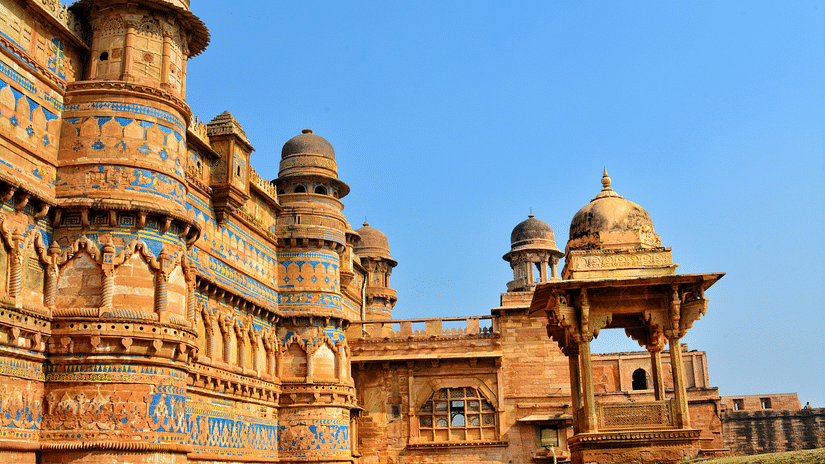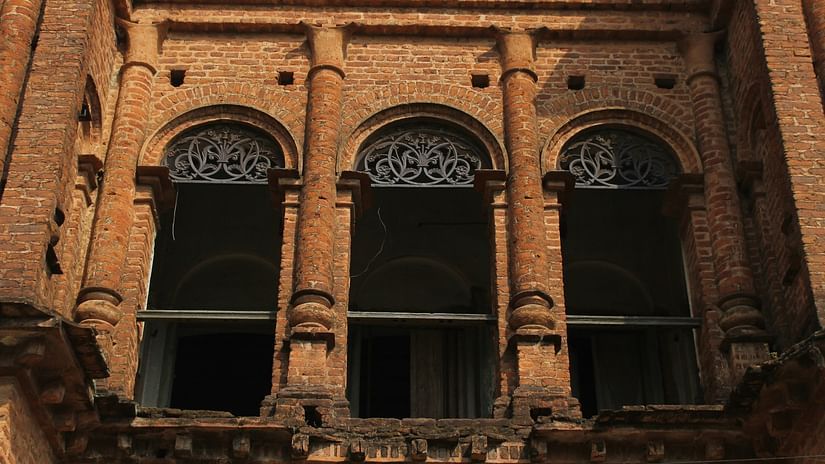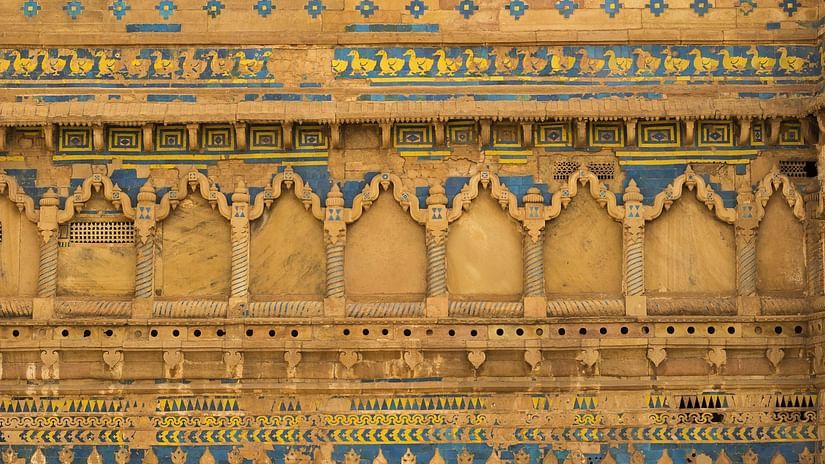- Shopping in Kochi - Copy
- Shopping in Kochi
- New Year Celebration in Rajasthan
- Christmas in Goa
- Trip from Delhi to Alwar
- New Year Celebration in Goa
- History of Maratha Empire
- New Year in Kochi
- Places of Interest in Gwalior
- Bala Quila, Alwar
- Jet Ski in Goa
- Paradesi Synagogue, Kochi
- Explore Gwalior Fort
- Visiting the Vast History: Kochi Mattancherry Palace
- Heritage Wedding in Rajasthan
- Tourist Attractions in Gwalior
- Hotel in Tijara
- Cabo De Rama Beach
- Matsya Festival
- Trip from Bangalore to Goa
- Tourist Attractions in Patiala You Shouldn't Miss
- Jagannath Mela in Alwar
- Waterfalls in Goa
- Ideal Places for a Short Trip near Delhi
- Hidden Gems in Rajasthan
- Delhi to Sariska National Park: Trip Guide
- Traveller’s Guide to Goa Carnival
- Weekend Trip from Gurgaon
- Trip to Rajasthan with Family
- Delhi to Rishikesh to Nainital
- Delhi to Patiala Tour Guide
- New Year Celebration Near Delhi NCR
- Christmas Celebration in Tijara Fort Palace, Alwar, Rajasthan
- Nainital in the Winter Season
- Sunburn Goa 2024
- Trip to Alwar
- Water Sports in South Goa
- New Year Eve Party in South Goa
- Moosi Maharani Ki Chhatri
- Siliserh Lake
- Must try dishes in Rajasthan
- Best Places to Visit around Jaipur
- Solo Trip to Rajasthan
- Sariska National Park
- Places to visit in Rajasthan in December
- Staycation Near Delhi NCR
- Best Holiday Destinations Near Delhi
- Best Resorts Near Delhi for Family
- Vacations near Delhi
- Goa in Summer Season
- Naina Devi Temple, Nainital
- Best Time to Visit Rishikesh
- Tijara Ji Jain Temple
- Must Visit Historical Sites in South Goa
- Local Food in South Goa
- Traditional Festivals of Rajasthan
- Naina Peak Trek
- Fatehpur Shekhawati
- Activities in Nainital
- Local Food in Tranquebar
- Alwar Famous Food
- Offbeat Places in Nainital
- Offbeat Places in South Goa
- Offbeat Places in Rajasthan
- History of Tharangambadi
- Best time to visit Nainital
- Best Beaches in South Goa
- History of Shekhawati
- The Best Beaches in Tamil Nadu
- Places to Visit in Shekhawati
- New Year Celebration in Nainital
- Weekend Trip in Tamil Nadu
- New Year in Goa
- Nainital Itinerary for 2 Days
- The Best Places to Visit in Patiala
- Places to Visit in Tharangambadi
- South Goa Itinerary for 3 Days
- Tourist Attractions in Alwar
- Kochi 2-day Itinerary
- Things to Do in South Goa
- Places to Visit in Gwalior
- Weekend Getaway from Jaipur
- Best Places to Visit in Alwar
- Best Time to Visit Alwar
- Places to Visit in Alwar
- Best Time to Visit Gwalior
- Literary Connections of Ramgarh: Tagore and Mahadevi Verma
- Things to Do in Alwar in Monsoon
- Exploring the Festivals of Alwar
- Everything You Need to Know About Betul, Goa
- Things to Do in Kochi at Night
- Uttarakhand Itinerary for 7 Days
- Best Time to Visit Kochi
- Visit The Mesmerising Hill Stations in South India
- The Best Places to Visit Near Nainital
- A Weekend Getaway to Ramgarh: Travel Guide
- Explore The Magical Cochin Backwaters
- The Majestic Coonoor to Ooty Toy Train
- The Best Vacation Spots Near Chennai
- Must Visit Places in Kerala
- Destination Wedding in Rajasthan
- Exploring the Orchards in Ramgarh
- Explore the Museums of Tranquebar
- Masilamani Nathar Temple, Tharangambadi
- Things to Do in Kesroli
- Best Places to Visit in South India in January
- Exploring the Tamil Nadu Coastline
- Places to Visit in Gwalior at Night
- Places to visit in Rajasthan in Winter
- Unexplored Treasures of Uttarakhand
- A Visit to Mangalavanam Bird Sanctuary
- Royal Rajasthani Weddings
- Rajasthan Itinerary for 7 days
- Into the Wilderness of Rajasthan’s National Parks
- Explore the Historic Town of Neemrana, Rajasthan
- Enchanting Lakes of Nainital
- A Dive Into the Royal History of Alwar
- Trails and Treks near Nainital
- The Seven Most Frequented Places in Rishikesh
- Kochi: The Queen of the Arabian Sea
- Fairy Queen: The Oldest Working Steam Locomotive
- Forts and Palaces of Alwar
- The Unparalleled Art and Culture of Madhya Pradesh
- Best Beaches To Visit in Cochin
- A Spiritual Journey to the Temples in Alwar
- Handicrafts of Rajasthan
- Places to Eat Street Food in Gwalior
- Wellness Retreats in Rishikesh
- The Danish History of Tranquebar
- Of Mystical Spaces and Hidden Treasures
- Rehabilitating Our Roots in Ruins... A Meet with Mr Aman Nath
- Our Annual Getaway to the Ramgarh Bungalows
- Experience Gwalior The Royal Way With Deo Bagh
- Living it up at a 14th Century Fort
- The Best of Both Worlds - Delhi and Jaipur
- Alwar City - Attractions
- Gwalior - The Tourist Capital
- Drivable Weekend Getaway from Delhi-NCR
- Hiking and Trekking Trails near Jaipur
- Safe Weekend Getaway from Delhi
- Trek Trails from Rishikesh
- Things to do Around Tranquebar Fort
- Majestic Temples of Gwalior
- Tea Plantations of Coonoor
- Fort Stay in Alwar
- Best Places to Visit in Tamil Nadu
- Shopping in Gwalior
- The Chinese Fishing Nets of Kochi
- Exotic Swimming Experiences near Delhi
- Ketty Valley, The Second Largest Gorge in the World
Steeped in history, Gwalior is one of Madhya Pradesh’s most treasured cultural cities. A land of mighty fortresses, ancient temples, royal palaces, and legendary musicians, Gwalior, also known as the Music City of India, has long held a special place in India’s heritage. Its paths echo with stories of dynasties past, while its vibrant bazaars and timeless monuments invite travellers to step back in time. Whether you’re a history enthusiast, spiritual seeker, or architecture lover, tourist attractions in Gwalior offer something unforgettable.
Explore the Iconic Gwalior Fort
At the heart of Gwalior’s appeal lies the awe-inspiring Gwalior Fort. Perched on a rocky hill, this grand structure has earned the title The Gibraltar of India for its impregnable design and strategic location. With its intricate tilework and lattice windows, the Man Singh Palace inside the fort is a stunning display of Rajput architecture. The Sas Bahu Temples, carved from stone, exhibit remarkable craftsmanship and spiritual ambience, while the enormous Jain rock-cut sculptures, etched into the hillside, add a unique religious depth to the site. As you walk along the ramparts, panoramic views of the city unfold, offering a breathtaking backdrop to this historical marvel.


A Spiritual Stop: The Sun Temple
Among the most serene Gwalior tourist places is the Sun Temple, modelled after Odisha’s Konark Sun Temple. Built in red sandstone with gleaming white marble interiors, the temple is dedicated to the Sun God and stands out with its intricate carvings and peaceful atmosphere. It’s an ideal stop for both devotees and travellers drawn to classical Indian temple architecture. The temple’s neat gardens and photo-worthy design make it a popular location for early morning or sunset visits.
Musical Legacy: Tansen’s Tomb
Gwalior’s contribution to Hindustani classical music is legendary, and Tansen’s Tomb pays tribute to one of its greatest maestros. Tucked within a quiet complex near the tomb of Sufi saint Muhammad Ghaus, this site reflects the city’s deep cultural roots. Every year, the Tansen Music Festival/Tansen Samaroh draws classical musicians and music lovers from around the world, keeping the maestro’s spirit alive. Exploring the area around the tomb gives a glimpse into the artistic soul of Gwalior.


Gujari Mahal Museum: A Heritage Showcase
Built by Raja Man Singh for his queen, Mrignayani, the former palace of the Gujari Mahal Museum is a treasure trove for art and history lovers. Now converted into a museum, it houses a remarkable collection of sculptures and ancient artefacts. The palace itself is an architectural delight, with traces of royal life visible in its arched doorways and open courtyards.
Hidden Gems & Local Markets
Beyond the famous landmarks, Gwalior hides several offbeat gems. Visit Gopachal Parvat to witness more Jain rock carvings nestled into the hillside. Stroll through the Italian Garden, a quiet park that offers a peaceful break from sightseeing. For a taste of local life, head to Patankar Bazaar, where vibrant stalls brim with handicrafts, handwoven textiles, stone carvings, and delicious street food. These local experiences are what make Gwalior sightseeing truly immersive.


Travel Tips for Gwalior Visitors
The best time to visit Gwalior is between October and March, when the weather is pleasant and conducive to outdoor activities. The city is well-connected by train (via Gwalior Junction), road (NH44), and air (Rajmata Vijaya Raje Scindia Airport). You can cover the major attractions comfortably with a 1-2 day stay. Local commute is easy with auto-rickshaws, taxis, and ride-hailing services. For first-time travellers, hiring a local guide at the fort can enhance your experience.
Where to Stay: Deo Bagh – A Heritage Haven
For a truly enriching experience, Deo Bagh by Neemrana Hotels offers a charming 17th-century stay that complements the city’s regal character. This boutique property, surrounded by peaceful gardens and steeped in history, provides a serene base for exploring Gwalior's tourist attractions. Guests can choose from tastefully appointed rooms that feature traditional decor, heritage architecture, and modern comforts. The lush gardens, a multi-cuisine restaurant, tranquil courtyards, and personalised hospitality elevate the experience, making Deo Bagh a favourite among culture-conscious travellers.

Gwalior sightseeing effortlessly combines history, spirituality, and artistry, taking you from ancient forts to musical legacies and bustling bazaars. Whether you're wandering through palace corridors or soaking in the soul-stirring strains of classical music, the city offers a rewarding escape into India’s royal past. Make the most of your trip by staying at Deo Bagh, where history lives in every brick and the charm of Gwalior unfolds right at your doorstep.